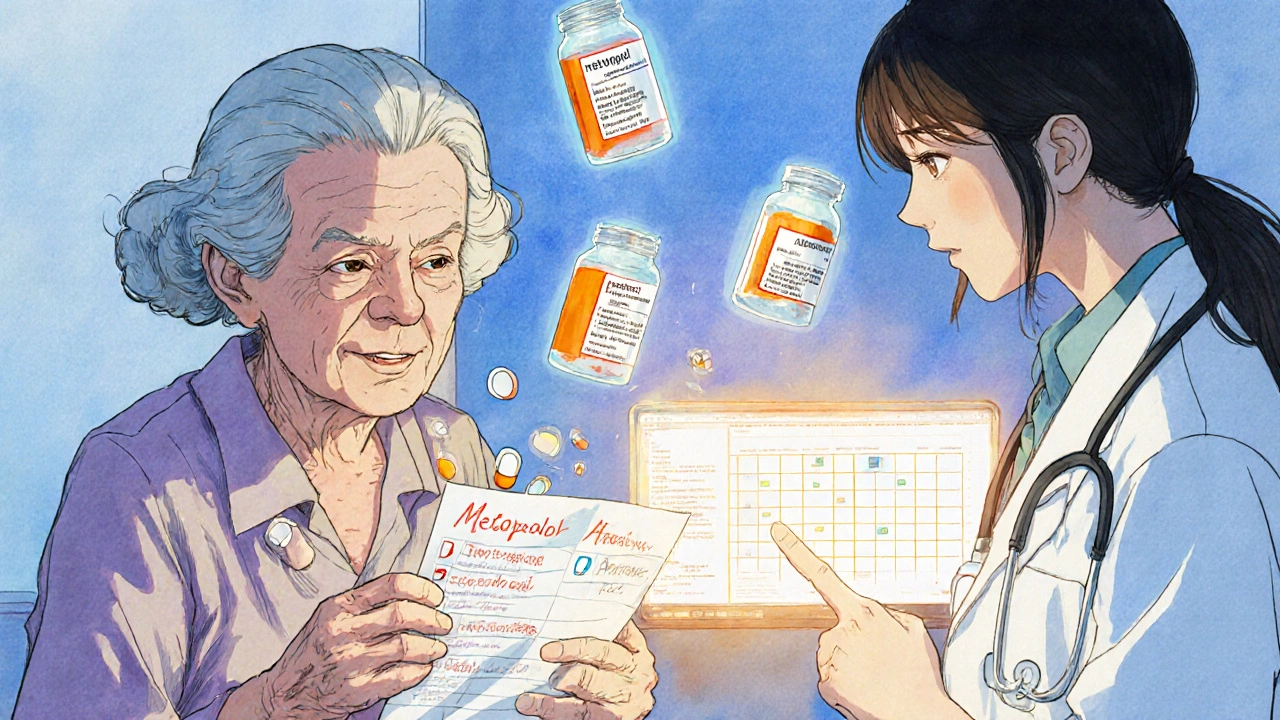Medication Safety: Protect Yourself from Dangerous Drug Interactions and Side Effects
When you take a medication, you're not just dealing with one drug—you're entering a web of possible drug interactions, when two or more medications react in harmful ways inside your body. Also known as pharmaceutical conflicts, these can turn a safe treatment into a life-threatening event. Many people don’t realize that even over-the-counter pills like Benadryl or cold meds can clash with prescriptions, especially if you’re on multiple drugs. Anticholinergics, a class of drugs used for everything from allergies to overactive bladder, are one of the most overlooked dangers. They’re linked to memory loss, brain shrinkage, and higher dementia risk in older adults—yet they’re still prescribed routinely. And it’s not just about what you take—it’s about what you eat. MAOIs, a type of antidepressant for treatment-resistant depression, require strict dietary rules. Eating aged cheese, cured meats, or even tap beer while on them can spike your blood pressure to dangerous levels. These aren’t rare edge cases. They’re everyday risks hidden in plain sight.
Some drugs don’t just interact with other pills—they can mess with your heart. QT prolongation, a heart rhythm disturbance caused by certain medications, can lead to Torsades de Pointes, a rare but deadly arrhythmia. Drugs like some antibiotics, antifungals, and even certain antipsychotics can trigger it. You won’t feel it coming until it’s too late—unless you know the warning signs. That’s why medication safety isn’t just about following labels. It’s about asking the right questions: Could this interact with what I’m already taking? Does this affect my heart? Is there a safer alternative? And for older adults, the risks multiply. Dry mouth from anticholinergics might seem harmless, but it’s often the first clue to deeper brain changes. Same with benzodiazepines: tapering off them wrong can cause seizures or extreme anxiety. Safe use means knowing when to stop, not just when to start.
Medication safety also means knowing where your drugs come from. With most pills made overseas, quality control varies. The FDA monitors manufacturers in India more closely than those in China, but even then, mistakes happen. That’s why checking your pharmacy’s reputation matters. And it’s not just about big pharma—some people turn to online sellers for cheaper generics. But buying warfarin, metformin, or ivermectin online without verification can be deadly. A fake pill might look identical, but without the right dose, it’s not medicine—it’s a gamble.
What you’ll find below isn’t just a list of articles. It’s a practical guide to spotting hidden dangers in your medicine cabinet. From how to safely taper off benzos, to why your dandruff shampoo might be safer than you think, to how a simple cholesterol drug could be putting your heart at risk—each post breaks down real risks with real examples. No fluff. No theory. Just what you need to know to stay safe while taking what you need.
How to Avoid Duplicate Medications After Specialist Visits
Learn how seniors can avoid dangerous duplicate medications after specialist visits by keeping a full medication list, using one pharmacy, asking the right questions, and working with their primary care doctor to prevent harmful drug overlaps.
